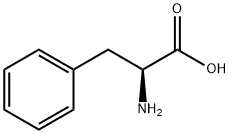Phenylalanie is an essential amino acid and it is the precursor of the amino acid tyrosine. The body cannot make phenylalanie but it needs phenylalanie to produce proteins. Thus, human needs to obtain phenylalanie from food. 3 forms of phenylalanie are found in the nature: D-phenylalanine, L-phenylalanine, and DL-phenylalanine. Among these three forms, L-phenylalanine is the natural form found in most foods that containing proteins, including beef, poultry, pork, fish, milk, yogurt, eggs, cheeses, soy products, and certain nuts and seeds. The form of phenylalanine determines its application. It is suggested that L-phenylalanine can strengthen the effect of UVA radiation for people with vitiligo, in which L-phenylalanine may lead to darkening or repigmentation of the white patches, particularly on the face. The neurotransmitters L-phenylalanine affects help reduce hunger, improve memory, lessen the symptoms of ADHD and Parkinson's disease, and ease chronic pain, according to the UMMC research. Thus, L-phenylalanine is used in the manufacture of food and drink products and sold as a nutritional supplement for its reputed analgesic and antidepressant effects. L-phenylalanine is also suggested as an intermediate for anti-cancer drugs. A few small studies showed promise using L-Phenylalanine to manage alcohol withdrawal and ease PMS symptoms. It is also used in artificial sweeteners such as aspartame.

